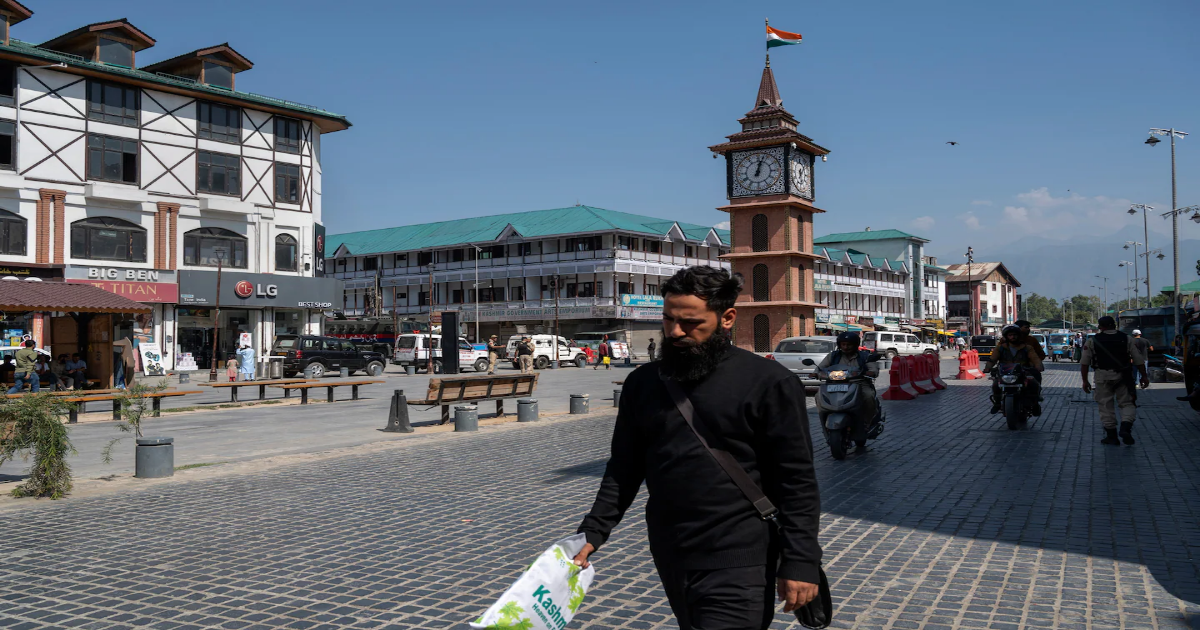At least 26 people were killed and more than a dozen were injured when militants opened fire on tourists in a picturesque mountain town in Indian-controlled Kashmir on Tuesday. A militant group banned in India claimed responsibility Wednesday.
It was the deadliest attack in years against civilians in years in a region, claimed by both India and Pakistan, that has been racked by violence for decades. Here is a basic rundown on the attack and the region.
A group of tourists were visiting a popular area — a meadow in mountainous Kashmir’s Baisaran Valley, known as “mini-Switzerland,” outside the town of Pahalgam — when militants emerged from a nearby forest and opened fire. Police said 25 Indians and one Nepalese citizen were killed. Since the group was in an area only accessible by foot or horseback, getting the injured to the nearest hospital was difficult, one witness told The Washington Post.
Indian media outlets attributed the attack to the Resistance Front (TRF), a militant group banned by New Delhi in 2023 as a terrorist organization, but there was no verifiable claim of responsibility.
The partition of the Indian subcontinent in 1947 did not resolve the status of the borderland Kashmir region — an area that remains contested. When the territory under British rule was divided into Hindu-majority India and Muslim-majority Pakistan, the Kashmir region — nearly 86,000 square miles of land at the northernmost borders of India and Pakistan — was technically left independent, and given the choice to accede to either country.
Kashmir’s Hindu monarch tried at first to retain independence for the region, which was heavily Muslim, but ultimately chose to accede to India. Since then, the countries have fought three major wars and remain locked in the simmering dispute. Thousands of civilians have been killed in the violence, targeted or caught in the crosshairs, and Indian authorities have arrested thousands of politicians, lawyers and activists.
The conflict escalated in the 1970s, as both countries started working on their first nuclear weapons.
Over the decades, armed Kashmiri militants seeking independence have targeted civilians, including Hindu pilgrims, and Indian forces. Indian authorities have responded with crackdowns. Since the Indian government revoked the region’s special autonomy in 2019, The Post reported, Kashmiris deemed too vocal or too close to separatists have been fired, jailed or warned to stay silent.
Rights groups accuse Indian authorities of carrying out arbitrary detentions and extrajudicial killings targeting the region’s Muslim majority.
Both countries continue claim the territory in full, but each has administrative control over only one part, divided by an unofficial militarized border known as the Line of Control. India controls the largest, southernmost portion, known as the state of Jammu and Kashmir, while Pakistan controls what it calls Azad Kashmir and Gilgit-Baltistan.
Tuesday’s incident was the biggest attack on civilians in the area in recent years, but violence in the region has persisted over the past several decades. In February 2019, tensions escalated when a militant group attacked Indian paramilitary forces, prompting the Indian air force to strike inside Pakistan-administered territory for the first time in decades. Pakistan then retaliated against India, striking two fighter jets and capturing a pilot.
Indian officials condemned the attack, vowing retribution. India’s Cabinet Committee on Security convened Wednesday to discuss the attack, according to a social media post from Prime Minister Narendra Modi, who chaired the meeting. The day before, he wrote that those behind the attack “will be brought to justice.”
“Our resolve to fight terrorism is unshakable and it will get even stronger,” he wrote. A spokesperson for the opposition Congress party wrote on X, “Time to teach Pakistan a lesson they don’t forget.”
Pakistan condemned the attack and denied involvement. Its Foreign Ministry said in a statement that it was “concerned at the loss of tourists’ lives.”
The attack occurred during a visit to India by Vice President JD Vance, which analysts said might not be a coincidence, given the opportunity for international attention. (In 2000, gunmen killed 35 Sikh men in a Kashmiri village ahead of then-President Bill Clinton’s visit to India.) Vance wrote on social media that he and his wife, Usha Vance, extended their condolences to the victims, adding that they have been “overcome with the beauty” of India and its people.
President Donald Trump also condemned the attack in a post on Truth Social, his social media platform, writing that the “United States stands strong with India against Terrorism” and pledging support for Modi and “the incredible people of India.”
Karishma Mehrotra contributed to this report.
